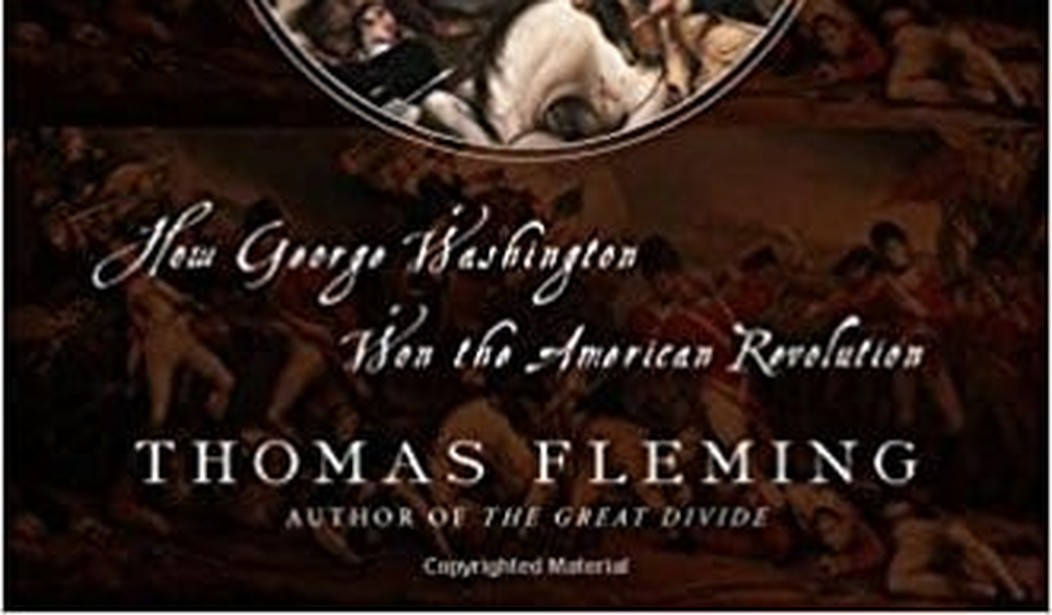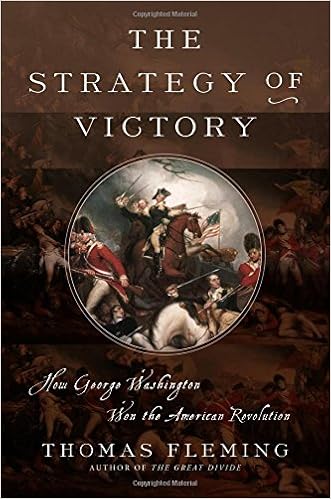With Mythbusters making its welcome return to cable TV, it’s a good time to bid farewell to one of the greatest debunkers of postmodern myths about America and its founding — historian Thomas Fleming.
Fleming, who passed away at the age of 90 this past July, is primarily known for, to paraphrase William F. Buckley, standing athwart revisionist trends that dismissed the Founders as racist elites and yelling “Stop!”
Tom was generous with his time to both P.J. Media and this author, being the first to give my book, The Forest of Assassins, a rave review. And when I received his publisher’s advance copy of his last book, The Strategy of Victory: How General George Washington Won the American Revolution, two days after his death, it took me a few days to pick it up, knowing that once I was done, I would have no more new Thomas Fleming books in my future.
But devour it, I did. And so should you. This is classic Fleming, lively and readable and unabashedly pro-George Washington and the American founding. Yet it illuminates the conflicts within the Revolution and debunks several cherished American myths at the same time.
Some of those myths, Fleming writes, were the result of revolutionary propaganda of the time—and the fact that some of the Founders believed their own press was nearly the unmaking of the Revolution.
1. The Myth of the Minuteman
This one survives to this day, but as Fleming illustrates, it was nearly fatal to the Revolution in its infancy as too many in Congress believed their own propaganda about Lexington and Concord. For the purists, it was also a matter of ideology.
Congressman John Adams maintained that only the “meanest, idlest, most intemperate and worthless” men would sign such a contract [a year’s enlistment in a regular army]. Dr. Benjamin Rush of Philadelphia, who exceeded Adams and almost everyone else as a village idiot on military matters, declared, “I should despair of our Cause if our country maintained sixty thousand men abandoned enough to enlist for three years or more.”
In reality, Fleming shows, militia troops—with notable exceptions—fought when they wanted to, went home when they wanted to, and never stood firm in the face of a British bayonet charge. Washington did deploy them effectively at times, but only when supported by a regular army.
2. The Myth of Stupid British Tactics
While I was reading this book in an oncology waiting room, a well-intentioned man began telling me how we beat the British because we had sharpshooters—and the Redcoats just lined up to be picked off. That’s the most common of the militia myths that has survived to this day.
But as Fleming illustrates in several gripping passages, there were few things as fearsome in the 18th century as a British bayonet charge. And in the vast majority of cases it led to a militia retreat. It took a trained Continental Army to stand up to that—and every face-to-face major battle won by the American side had that trained army.
General Howe, Fleming shows, was a very good commander and strategist, as was General Clinton. And if not for Cornwallis putting him in an untenable position just as the French decided to finally make their mark… who knows?
Fleming brings both characters to vivid life and makes us grateful, particularly in the case of Tarleton and Cornwallis, that their respective commanders did not give them more responsibility.
3. The Myth of Washington’s Poor Tactics
A widely accepted view of Washington’s generalship is that he merely outlasted the British in a series of defeats that were eventually just too costly for their government to accept.
While strategic defeat was indeed part of Washington’s strategy, Fleming shows that he was always preparing for the opportunity to deal the British a major—even final—blow.
Cowpens and Yorktown were not accidents, and crossing the Delaware was an attack, not our version of Dunkirk.
And in the face of Congress ordering stupid things like an invasion of Canada, building lots of forts on hills hoping the British would repeat their Bunker Hill mistake, and of course, always pushing to rely on militia, Washington was able to accomplish the most difficult thing for a commander—effectively changing their strategy after the war had begun.
He combined the Fabian strategy of strategic retreat with the use of specialized troops (like Daniel Morgan’s snipers) and made what use he could of the militia, all while being undermined by jealous commanders, traitors, and Congress.
4. The Myth that a Study of Washington the General Must Be Long, Dry, and Filled with Maps
The Strategy of Victory clocks in at a mere 275 pages, but gives an excellent overview of the war from beginning to end. Even more impressive, this is not a bird’s-eye overview but includes telling anecdotes, colorful characters, and battlefield stories.
Two Redcoats who have gotten considerable Hollywood time also make an appearance. The excellent Mel Gibson movie The Patriot shows the weakness of Cornwallis as a commander, but in focusing on the evil nature of the bad guy based on the real-life cavalry commander Banastre Tarleton, it neglected the fact that he was a superb soldier and tactician. Likewise, AMC’s Turn made Col. Simcoe into such a cartoonish villain that his considerable strengths as a commander were diminished. Fleming manages to bring them to life, despite the brevity of the book.
While Fleming’s primary fame comes from his expertise on the American Revolution, he also busted myths about FDR’s military buildup during WWII, Woodrow Wilson’s supposed greatness as a president, and that the Founders shared a singular vision of what America should be.
But now that prestigious historians are once again writing Big Books that praise Washington, Franklin, and Adams, Fleming can rest in peace as a faithful servant of the truth. Job well done.










Join the conversation as a VIP Member